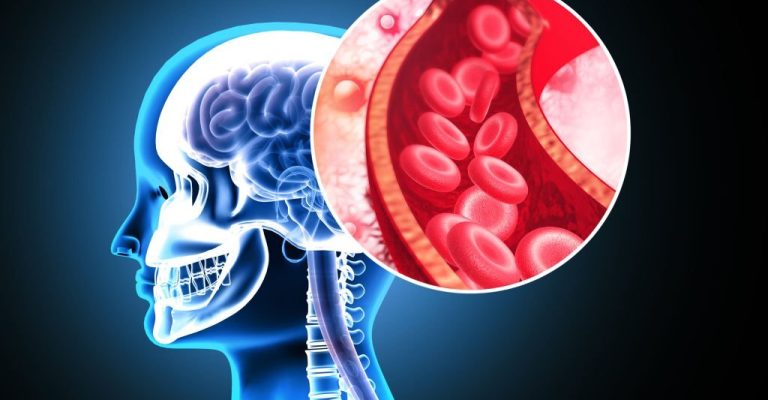
A ministroke, or transient ischemic attack (TIA), is a frightening and serious condition affecting millions of Americans yearly. It can cause severe symptoms such as paralysis and lack of coordination that require fast medical attention to reduce the risk of more significant strokes down the road.
While many patients have full recoveries after experiencing a ministroke, it’s essential to understand what caused it to occur in order to protect oneself from future related health concerns best – so it’s necessary to pay close attention to your body and know the common warning signs. This post will discuss the symptoms, risk factors, and treatment options available for successful ministroke recovery.
A ministroke or Transient Ischemic Attack (TIA) is a type of stroke with symptoms similar to those of a traditional stroke. Still, the effects are temporary and usually resolve within 24 hours. TIAs typically involve a temporary disruption in the blood supply to part of the brain, which can cause symptoms such as difficulty speaking, confusion, numbness or tingling on one side of the body, dizziness, and trouble with vision.
The main difference between a TIA and a traditional stroke is that no permanent damage is caused by the ministroke, although it may be a warning sign for an impending actual stroke. It is important to note that individuals who have experienced a TIA should take all necessary preventive measures to reduce their risk of having future strokes.
Treatment measures may include lifestyle changes such as controlling high cholesterol and blood pressure levels, managing diabetes, quitting smoking, exercising regularly, and following a healthy diet.
Ministrokes and full-blown strokes have so many symptoms that distinguishing between them might be difficult without medical testing. Both groups of symptoms have the characteristic of appearing unexpectedly.
Symptoms of facial, limb, or body paralysis or stiffness, particularly if localized to one particular side of one’s body
Ministrokes are most often brought on by thrombosis. A blood clot in a brain-connected artery prevents normal blood flow and oxygen delivery, leading to brain damage. Blood clots that form during a ministroke often dissolve rapidly after their formation, restoring normal blood flow.
Ministrokes can occur by fatty artery accumulation or air bubbles. Ministrokes are rare and are caused by a small amount of blood in the brain. As our blood arteries naturally narrow as we age, we become more susceptible to thrombosis as we become older.
The risk of developing a blood clot may also be increased by other variables, such as:
One of the leading causes of both ministrokes and full-blown strokes is high blood pressure. Long-term uncontrolled hypertension is associated with inner-arterial wall deterioration and eventual atherosclerosis. In addition, a blood clot might form if the blockage in your arteries breaks. As a result of these irregularities, a ministroke or full-blown stroke may occur.
If your specialist has diagnosed you with high blood pressure, monitoring your readings on a regular basis is essential. There are two types of secondary risk factors for stroke: ones you can and cannot change.
Although possessing any of these factors does not guarantee that you’ll experience a stroke or ministroke, your physician should keep a watch on any underlying issues.

Smoking: Cigarette smoking considerably increases the risk of stroke due to the harmful effects on the circulatory system caused by nicotine and carbon monoxide.
Diabetes: Uncontrolled diabetes poses a greater threat of stroke than type 1.
Consuming an Excessively Fatty Diet: Consuming large quantities of red meat, fried meals, and processed food might significantly increase your stroke likelihood due to their high animal fats and trans fat content.
Not getting enough exercise: Stroke risk is increased in those who don’t receive adequate physical activity.
Obesity
The chance of having a stroke is increased when a person is obese because of the increased likelihood of acquiring complications like diabetes and high cholesterol.
Age: A person’s chance of having a stroke rises with age, but even young individuals are not immune to the condition.
Family history: Your chance of having a stroke is higher if other people in your relatives have had one, particularly if they suffered one before they reached the age of 65.
Race: As compared to other populations, Black Americans are at a greater risk for stroke.
Gender: Specific variables, including pregnancy, a history of hypertension or diabetes mellitus, hormonal contraceptive usage, and postmenopausal hormone treatment, put women at a greater chance for stroke versus men.
Although ministrokes seldom cause long-term brain damage, anybody experiencing any associated symptoms should see a doctor immediately. Ministrokes and full-blown strokes are indistinguishable from the naked eye; only a CT or MRI scan of the brain may reveal the difference.
Ischemic strokes often go undetected on CT brain scans for at least 8 hours to 1 day following the start of symptoms. However, stroke may often be detected on an MRI much earlier. It is common practice for doctors to request an ultrasound to check for carotid artery obstruction or buildup while determining the root cause of a ministroke or actual stroke.
An echocardiogram is also necessary to check for cardiac clots or a PFO (patent foramen ovale), a connection between the left and right heart chambers. Electrocardiograms and maybe chest X-rays will also be taken by the practitioner.
A transesophageal echocardiogram may be a component of the diagnostic checkup if your doctor suspects you have had a cryptogenic stroke, where the etiology is unknown. In order to get a more distinct view of the heart during this procedure, a probe must first be inserted within the esophagus.
Ministroke symptoms may only last for a short while. The typical duration of a ministroke is less than 24 hours. If you wait too long to see a doctor, your symptoms may have already subsided. Since your symptoms may have subsided by the time your doctor completes their examination, you may need to provide a detailed account of what happened following your symptoms reduced.
Ministroke symptoms are identical to those of an actual ischemic stroke, regardless of duration. Ischemic strokes occur more often than any other form of stroke. In spite of the fact that your symptoms may have subsided or disappeared before you reached the clinic or hospital, you should nonetheless report what had occurred.
Certain risks may be out of your hands, but you may mitigate them by taking the following measures.

Managing these risk factors is most effective when done in conjunction with your specialist and your personal efforts to alter your lifestyle.
For instance, hypertension may be managed with medication; in certain cases, a low-sodium diet may also be helpful. Much as high blood pressure may be controlled with medicine, hypercholesterolemia can be helped by consuming food high in fiber and low in saturated fatty acids.
Micro strokes occur when a blood clot momentarily obstructs the brain’s blood supply. Anti-platelet drugs prevent blood platelets from sticking up, lowering the likelihood of blood clots forming. Drugs like aspirin and clopidogrel are examples of such treatments.
Some anti-coagulant medicines exist that do not specifically target your platelets. Instead, they zero down on a particular protein in the bloodstream responsible for coagulation.
Carotid angioplasty is a relatively popular operation for stenotic arteries. You just need to have a little incision made in your groin so that a catheter may be inserted into your femoral artery. After finding the narrowest spot in your artery, your doctor will insert a stent to open it up and allow more blood flow.
A carotid endarterectomy is an invasive operation that may be recommended if your carotid artery is severely blocked. The chance of having another stroke may be drastically lowered by having the surgeon remove any fatty deposits from your arteries.
Keeping yourself ready by learning the warning signs and your own risk for a ministroke is essential. Although the effects of a ministroke on a person’s daily life are temporary, they do raise the person’s risk of suffering an actual stroke. Therefore, you can better prepare yourself for a ministroke if you are aware of the warning signs and your own risk factors.
After a stroke, it is common to have trouble seeing. Even if your eyesight improves in the weeks and months after a stroke, you may still be dealing with long-term complications. A professional can assist you in finding strategies to adapt, such as changing your routine, if you have modifications to your eyesight.